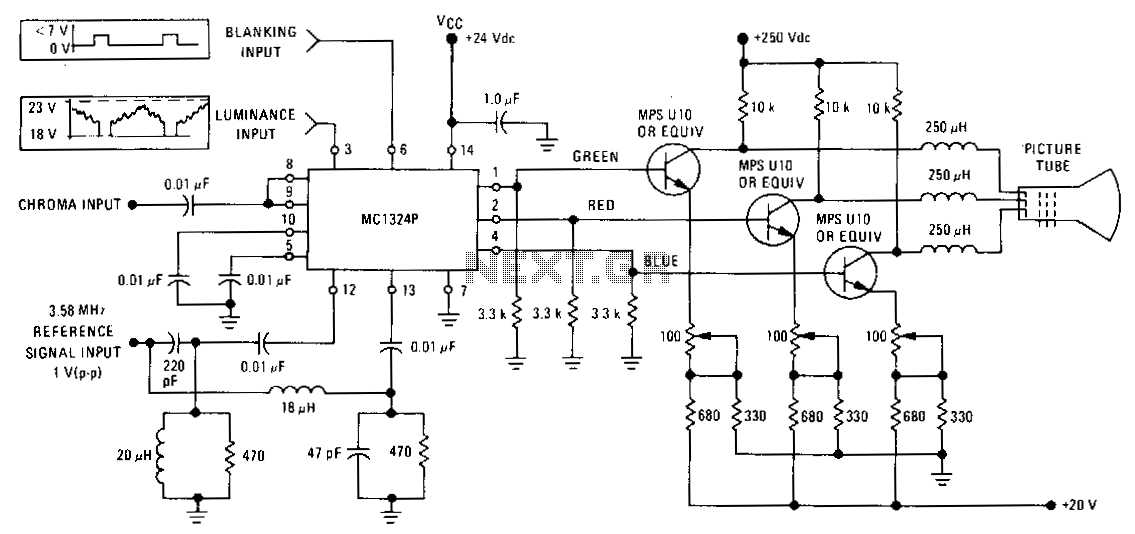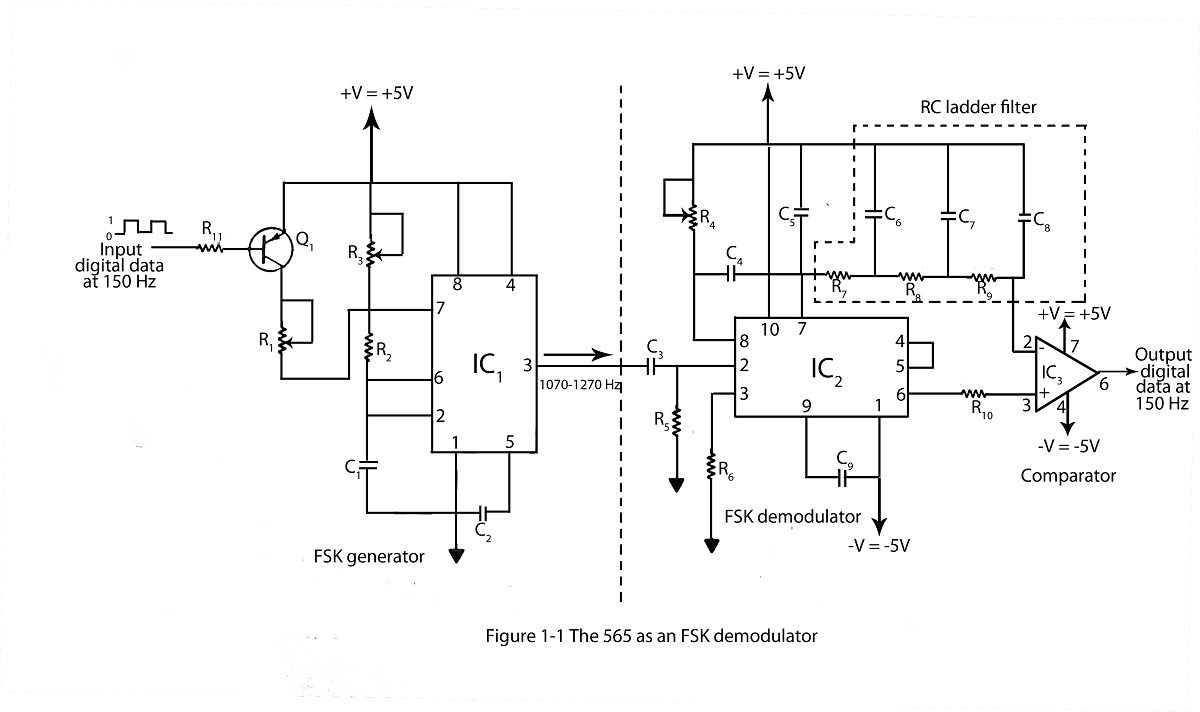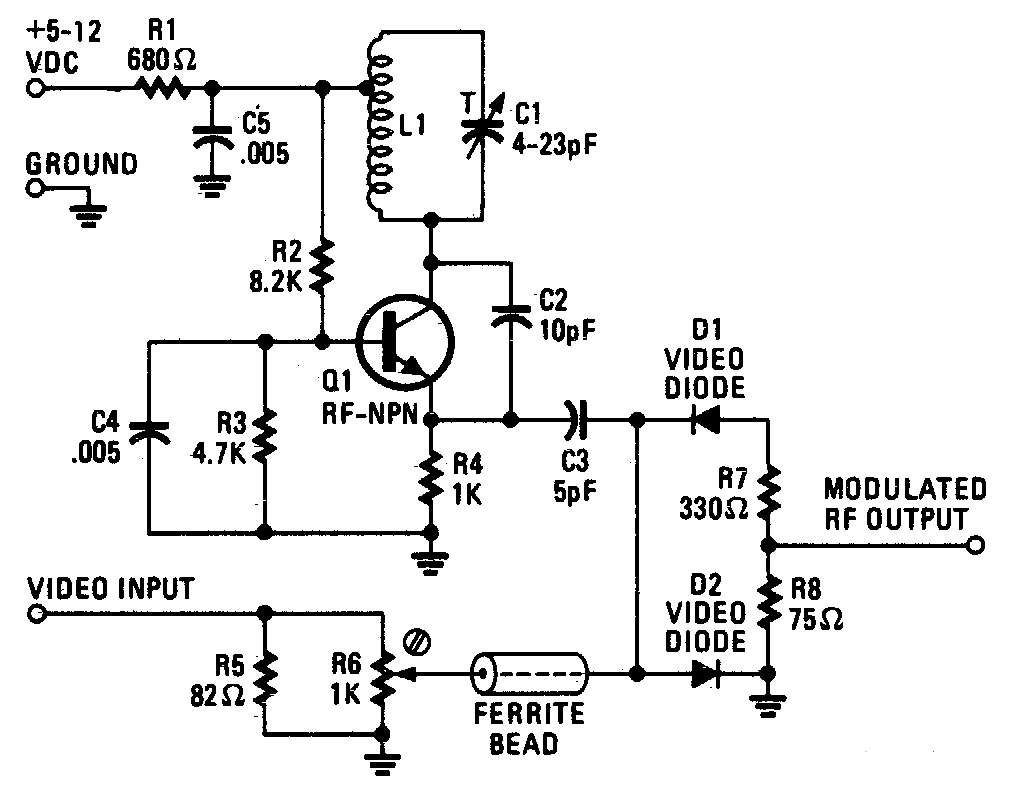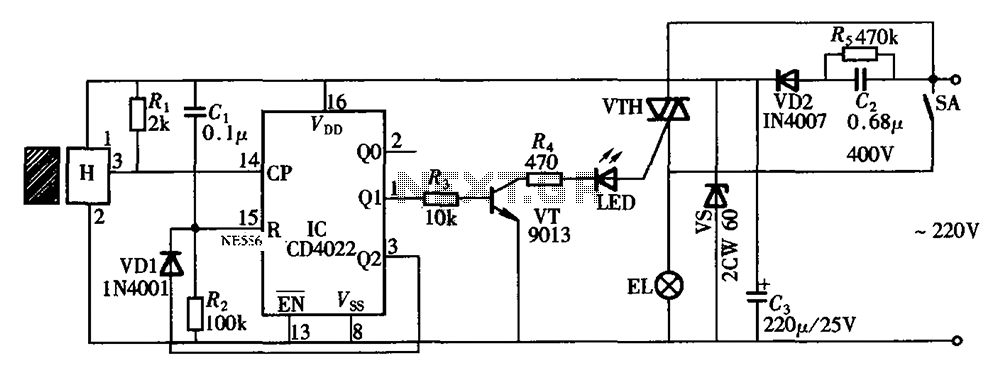
CD4001 composed of single-channel modulator
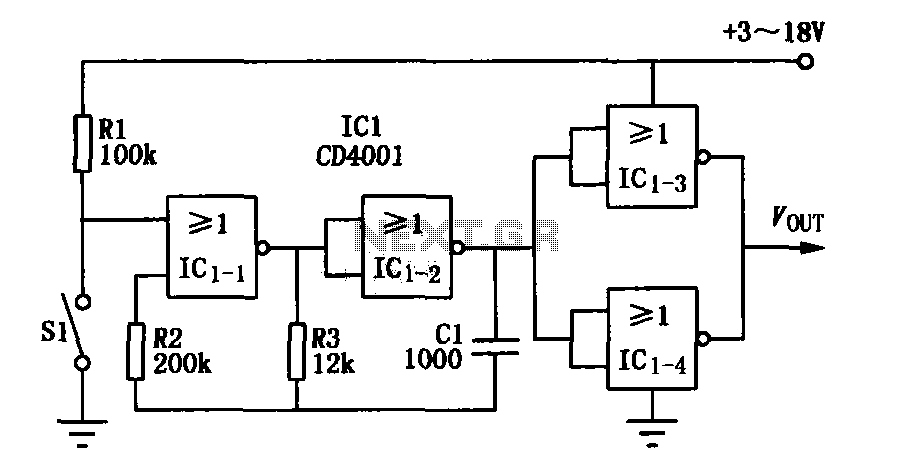
The core elements of this circuit are the second four-input NOR gate terminal IC CD4001. The entire circuit features a simple structure, with fewer components, making it easy to construct, particularly for remote control transmitters or carrier modulation transmission. The specific circuit-channel remote control transmitter modulator includes NOR gate IC1-1 and IC1-2, which form a multivibrator with an oscillation frequency of 40 kHz. The control terminal for the input of NOR gate IC1-1 determines the operation of the circuit; when it is high, the circuit stops oscillating, and when it is low, the circuit starts. Switch S1 acts as the control button; when pressed, the input terminal of NOR gate IC1-1 goes low, activating the oscillator circuit to produce a continuous square wave output at 40 kHz with a 50% duty cycle. Adjustments to the resistance or capacitance values of C1 and R3 can modify the oscillation frequency of the circuit. NOR gates IC1-3 and IC1-4 form a buffer stage to enhance the circuit's drive capability. The modulated output signal is then sent to the subsequent transmission circuit.
The circuit described utilizes the CD4001 IC, which consists of four independent NOR gates, making it suitable for various digital logic applications. In this configuration, two of the NOR gates are utilized to create a multivibrator, which generates a square wave signal. The oscillation frequency of 40 kHz is primarily determined by the external components, specifically the resistor R3 and capacitor C1. By altering these component values, the frequency can be adjusted, allowing for flexibility in the application.
The control mechanism is implemented via switch S1, which functions as a manual input to the circuit. When S1 is pressed, it sends a low signal to the input of NOR gate IC1-1, triggering the oscillation. This feature is particularly useful for remote control applications, where the ability to start and stop the transmission is critical.
The output from the multivibrator stage is a square wave with a 50% duty cycle, which is ideal for modulation purposes. The subsequent NOR gates, IC1-3 and IC1-4, serve as a buffer stage, providing increased drive capability to ensure that the output signal can effectively drive the next stage of the transmission circuit without distortion or degradation.
Overall, this circuit exemplifies a straightforward yet effective design for generating modulated signals for remote control applications, leveraging the properties of the CD4001 NOR gate IC to achieve reliable performance with minimal components.Core elements of this circuit is the second four-input NOR gate terminal IC CD4001, the entire circuit is simple structure, less components, easy to make, especially for remote control transmitter or a carrier modulation transmission. As shown in the specific circuit-channel remote control transmitter modulator NOR gate IC1-1, IC1-2 composition multivibrator, the oscillation frequency is 40kHz. On input NOR gate IC1-1 for control terminal, when it is high, the circuit stop vibration; when it is low, start-up circuit.
Switch Sl to the control button when Sl is pressed, the input terminal of the NOR gate IC1-1 is low, the oscillator circuit to work, the output 40kHz, 50% duty cycle of continuous square wave. Change in resistance or capacitance Cl R3 can change the oscillation frequency of the circuit. NOR gate ICl-3, ICl-4 composition of the buffer stage for improving circuit drive capability. The modulator output signal sent to the subsequent transmission circuit.
The circuit described utilizes the CD4001 IC, which consists of four independent NOR gates, making it suitable for various digital logic applications. In this configuration, two of the NOR gates are utilized to create a multivibrator, which generates a square wave signal. The oscillation frequency of 40 kHz is primarily determined by the external components, specifically the resistor R3 and capacitor C1. By altering these component values, the frequency can be adjusted, allowing for flexibility in the application.
The control mechanism is implemented via switch S1, which functions as a manual input to the circuit. When S1 is pressed, it sends a low signal to the input of NOR gate IC1-1, triggering the oscillation. This feature is particularly useful for remote control applications, where the ability to start and stop the transmission is critical.
The output from the multivibrator stage is a square wave with a 50% duty cycle, which is ideal for modulation purposes. The subsequent NOR gates, IC1-3 and IC1-4, serve as a buffer stage, providing increased drive capability to ensure that the output signal can effectively drive the next stage of the transmission circuit without distortion or degradation.
Overall, this circuit exemplifies a straightforward yet effective design for generating modulated signals for remote control applications, leveraging the properties of the CD4001 NOR gate IC to achieve reliable performance with minimal components.Core elements of this circuit is the second four-input NOR gate terminal IC CD4001, the entire circuit is simple structure, less components, easy to make, especially for remote control transmitter or a carrier modulation transmission. As shown in the specific circuit-channel remote control transmitter modulator NOR gate IC1-1, IC1-2 composition multivibrator, the oscillation frequency is 40kHz. On input NOR gate IC1-1 for control terminal, when it is high, the circuit stop vibration; when it is low, start-up circuit.
Switch Sl to the control button when Sl is pressed, the input terminal of the NOR gate IC1-1 is low, the oscillator circuit to work, the output 40kHz, 50% duty cycle of continuous square wave. Change in resistance or capacitance Cl R3 can change the oscillation frequency of the circuit. NOR gate ICl-3, ICl-4 composition of the buffer stage for improving circuit drive capability. The modulator output signal sent to the subsequent transmission circuit.
